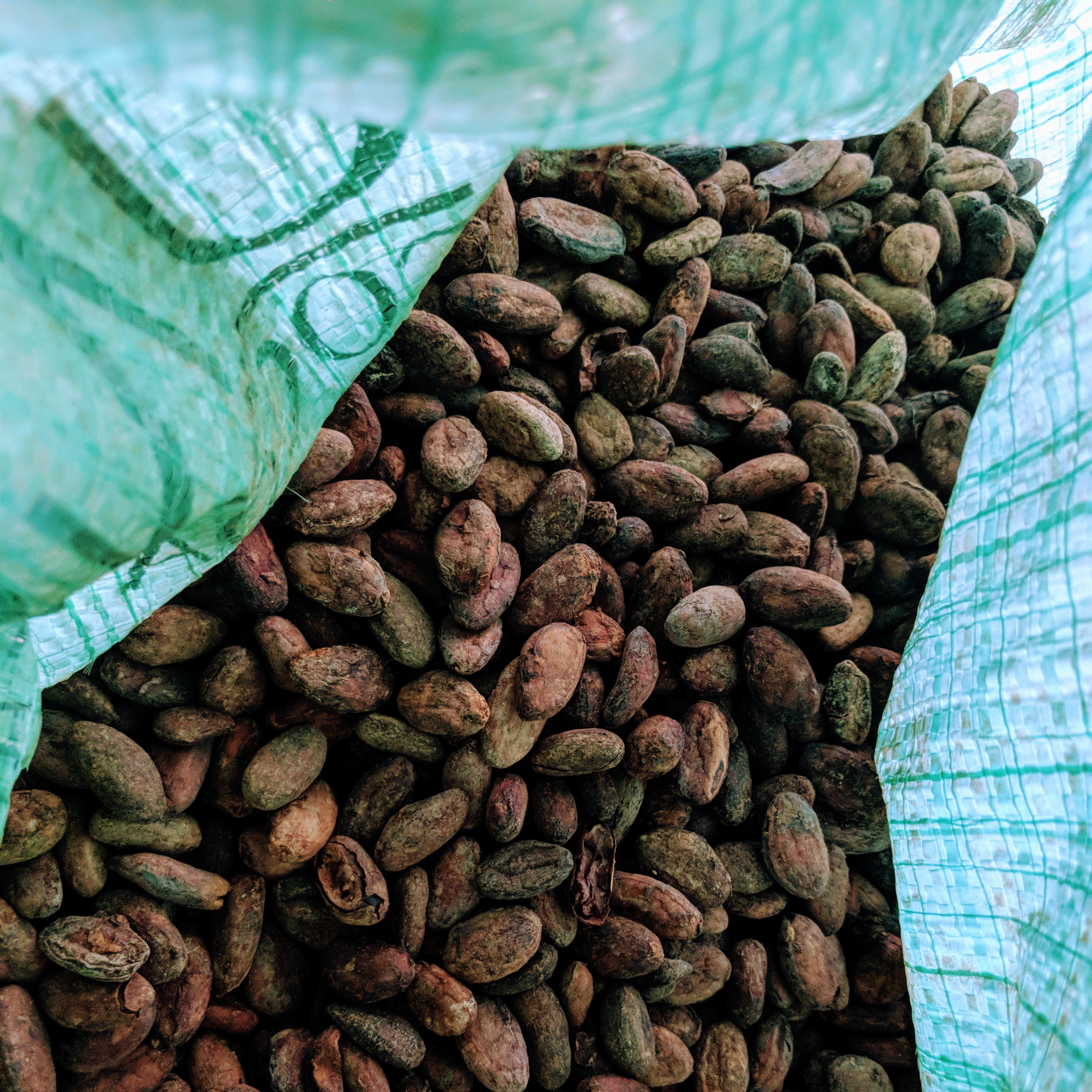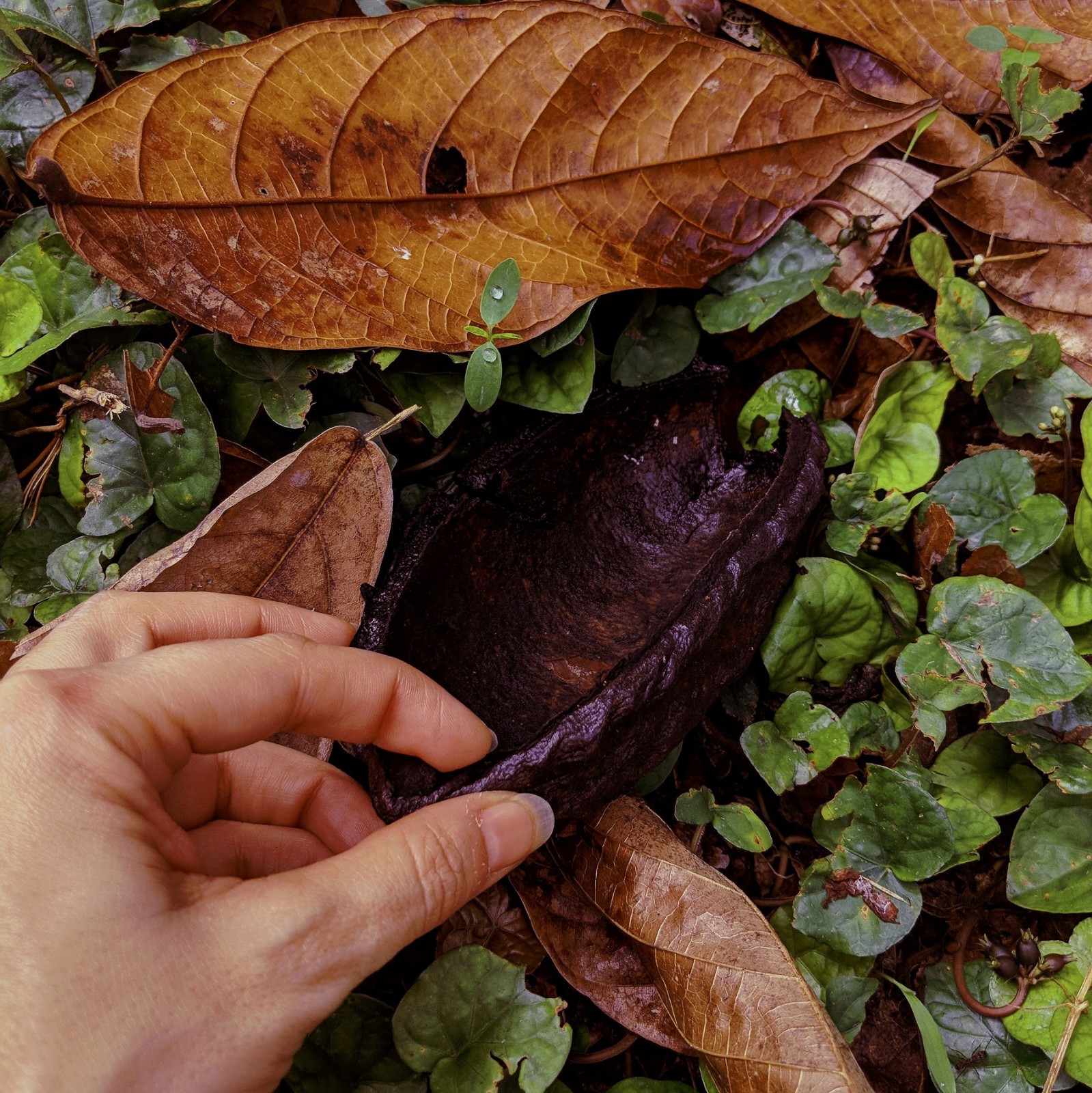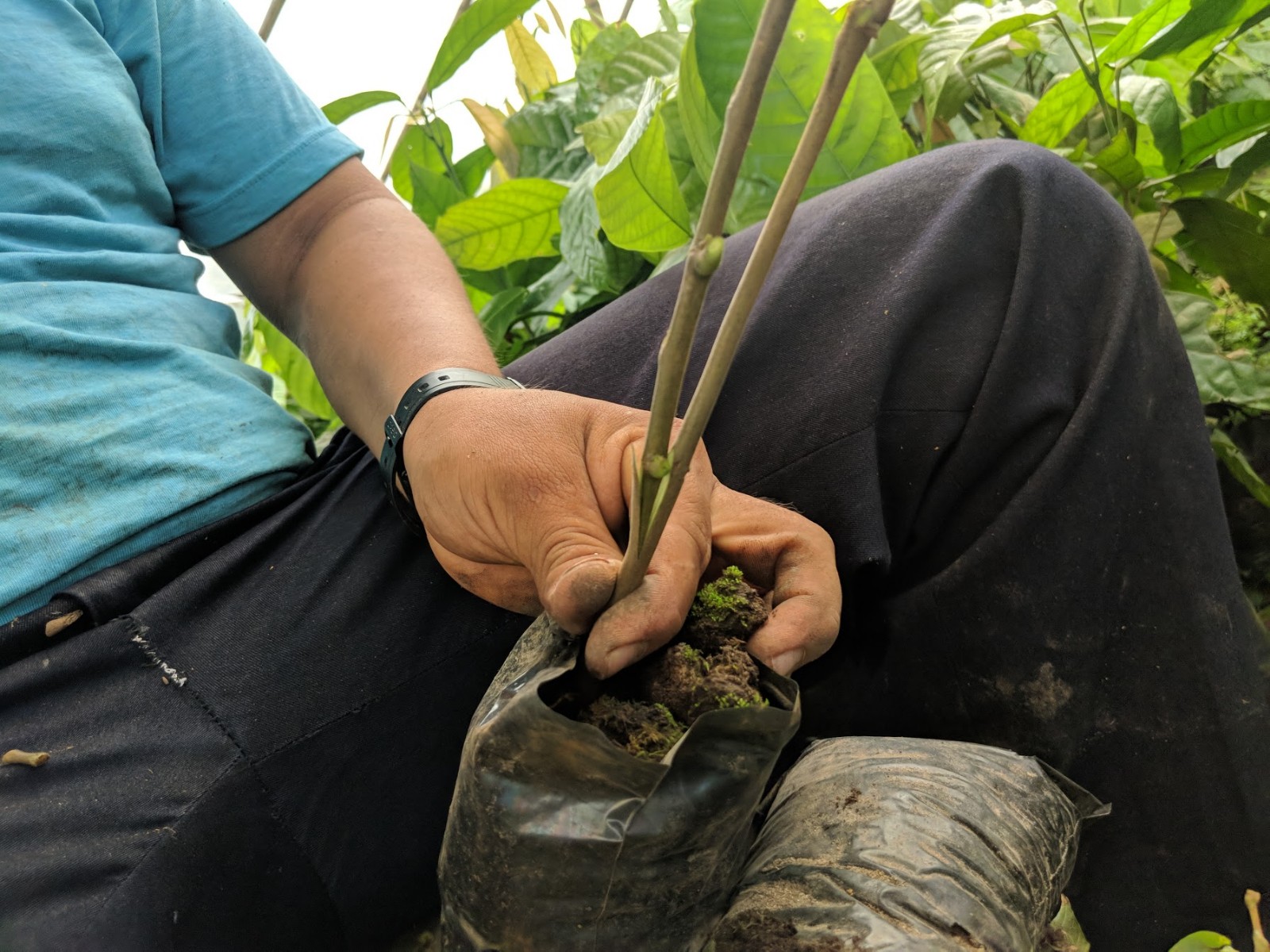New Cacao Varieties: A Positive Effect on The Socio-Economic and Environmental Impact
Feb 26th 2023
Welcoming the New Cacao Breeds for Better Flavor, Higher Yield, Less Pesticides and more.
Cocoa production is significant to the world’s economy. It generates a large amount of foreign exchange and employs thousands of people. However, various issues, including pests and diseases, aging cocoa plants, and climate change, threaten to reduce cocoa yields and impair cocoa quality.
As much as there is a romanticism about heirloom varieties, ancient trees, and the “original” cacao, new cacao varieties can assist in resolving these issues by boosting yields, reducing the threat of pests and diseases, and enhancing cocoa quality. This article will discuss how sustainable cacao varieties can benefit the world’s economy and ecology.
World’s Current Cocoa Production

Cocoa is an important product in the world’s economy. Most cocoa beans worldwide are used to make chocolate, cocoa butter, and cocoa powder. For this reason, cultivating cocoa beans globally is crucial to the chocolate and candy industries.
The International Cocoa Organization (ICCO) reports that the globe produced roughly 4.7 million tones of cocoa in 2020–2021. However, cocoa output is in peril due to poor productivity. Several issues, including aging cocoa plants, lack of nutrients in the soil, and ineffective agricultural techniques, affect production.
Another major concern is the abundance of illnesses and pests that harm cocoa production. Illnesses, including swollen shoot and black pod disease, pests like the cocoa mirid insect, cocoa pod borer, and black pod disease, are widespread across most cacao farms and can significantly affect cocoa harvests.
Weather changes also seriously threaten the cocoa crop. Climate change and extreme weather, such as droughts and floods, significantly impact cocoa production, reducing yields and diminishing cocoa quality. Luckily, introducing new cacao varieties has alleviated most of these problems. Let’s look at these varieties’ various positive socio-economic and environmental impacts on cacao production worldwide.
The Positive Impact of Cacao Varieties on the Cocoa Industry
Cacao farmers worldwide can resolve the issues with cocoa output by cultivating new cacao varieties. These varieties are produced by cross-breeding various cocoa varieties to produce crops with desirable characteristics such as high yields, disease resistance, and superior beans. It should be noted that breeding new varieties is not the same as genetically modifying them. Breeding is the process of using the best of the seedlings to continue with the traits that are desired (like in the breeding of pets like dogs and cats). They may positively impact cocoa production across the world socioeconomically and environmentally. In Ecuador, the best-known variety is the CCN-51. In the beginning, many farmers didn’t know how to properly ferment and treat the post-harvest drying of this bean, giving it a bad reputation compared to the original Arriba Nacional Bean. However, decades later, many of the award-winning beans nowadays are hybrid cocoa beans, including some farmers that use the controversial CCN-51. The INIAP in Ecuador now has also developed some additional flavor and aroma beans, namely the T-800 and T801, which has the aroma and flavor of the Arriba beans but have the following benefits that only new breeds can give.

Socio-Economic Impact
The world’s economy is heavily dependent on the production of cocoa, which creates millions of jobs while significantly raising the GDP of most countries that take part in the product’s cultivation and production. However, the industry has recently dealt with several issues, including declining productivity, disease outbreaks, and aging trees.
In this case, introducing new cacao varieties may greatly increase the economic significance of the cocoa sector. Here is how improved cocoa varieties can positively impact the economy and society among the stakeholders.
Boost Output on Cocoa Farms
The introduction of new cacao plant varieties to cocoa fields can increase the yield of cocoa. Heirloom cacao varieties often produce little and are prone to illnesses like black pod disease, mostly resulting in significant crop loss.
On the other hand, new cacao cultivars have been developed to be more productive and disease-resistant, allowing farmers to maximize their output. The farmers can certainly earn more money by making the crops more profitable. This can improve their families’ and communities’ living standards and economic performance.
Diversifying the Cocoa Industry
Growing new cacao varieties can diversify the cocoa industry. The world’s cocoa industry is now controlled by a few individuals. But hybrid cacao can enter new markets because some varieties are superior for creating certain products, like premium chocolate. This diversification may allow farmers and other stakeholders in the cocoa value chain to increase their earnings.
Implementation of Sustainable Practices
The chocolate industry can endure longer if cacao farmers embrace cultivating new varieties. A lot of the contemporary cocoa varieties are produced with sustainability in mind. They consider elements such as the soil condition, the quantity of water used, the level of biodiversity, and the use of fewer pesticides.
The new cacao varieties can help ensure that cocoa farming in the world will endure for a very long time by promoting sustainable methods, which are crucial for the lives of millions of people. Also, using sustainable agricultural methods helps lessen the harm that producing cocoa causes to the environment, improving it for farmers and everyone else.
Innovation and Technology Transfer Promotion
The development of hybrid cacao cultivars and the exchange of technologies can benefit the world’s cocoa business. Scientists and researchers often need to apply new technologies and research techniques while creating new varieties of cacao, which can promote the advancement of local academics.
Also, it is often necessary to develop new techniques for cultivation and processing when using these new cacao varieties. This generates fresh concepts along the entire value chain of chocolate. It may also result in developing new goods and procedures, providing fresh revenue streams to farmers and other interested parties.
Investment Attraction
The cocoa industry can attract greater investment if farmers cultivate new cacao varieties. Large investments in research and development are often necessary to produce new types of cocoa, and these investments can come from both the public and commercial sectors.
New cacao varieties can be grown and processed to expand export markets and attract foreign investment. The infrastructure and technologies employed in the cocoa value chain might become more robust due to this investment, which might boost output and spur economic expansion.
Even for small farmers, investing in new trees that they know will have a better survival rate and yield makes their investment less risky. Also, these varieties start producing cocoa much faster, making it feasible for farmers with less resources. Thus, they can plan their future better, knowing that they will have a return.
Quality Beans
New cacao cultivars are also being developed to produce better cacao beans that can fetch a greater price in the global chocolate market. Cocoa farmers can increase their income and raise their living standards by producing high-quality beans.
Also, researchers are creating new cacao cultivars resistant to various pests and ailments, including the cocoa mirid beetle, cocoa pod borer, black pod disease, and swollen shoot. By planting disease-resistant cacao varieties, cocoa farmers can limit the losses associated with reduced yields and reduce the damage that pests and diseases cause to their crops.
Greater Financial Worth
With new cacao varieties, the cacao industry can add value, considering that the quality will improve. The industry might see increased sales and earnings due to this.
Cacao farming countries might also increase their foreign exchange earnings by exporting cocoa and its goods. This could support the development and growth of the national economy.
Better Living Conditions
Cacao producers can increase their income and enhance their living by improving their crops’ productivity and quality. This might guarantee that nobody in rural areas is ever again impoverished. Individuals in rural cacao-growing areas can also have access to new employment prospects.
There will be additional opportunities for local income generation, which will discourage people from relocating to urban areas. In addition, cacao farmers can easily obtain loans and other financial services to improve their lives and grow their businesses.
Environmental Impact
Cacao production supports the livelihoods of most people all across the world. The economy depends heavily on cocoa production, as does the viability of its social system and environment.
Over the years, new cocoa varieties have been developed to increase yields, enhance quality, and make crops more resistant to pests and illnesses. Here is how these new varieties can benefit the environment globally.
Improved Soil Higher Standard
Improved soil quality is one of the best things new cocoa varieties can do for the environment. Cocoa plants require precise soil conditions, such as adequate drainage and an exactly perfect pH, to grow healthily. Slash-and-burn agriculture, a common practice in traditional cacao farming, depletes the soil and promotes erosion, which reduces crop yields and harms the ecosystem.
Consequently, cocoa cultivars are less susceptible to soil deterioration and erosion. Moreover, they have been engineered to have deeper roots, which enable plants to access water and nutrients buried deep in the soil. The hybrid plants reduce the need for fertilizer and irrigation, benefiting farmers and the environment due to the improved and healthier soil.
Reduction of Pesticides
Cocoa growers have long used a lot of insecticides to combat pests and diseases. The prolonged use of pesticides has damaged the ecosystem and increased the danger of illness for the farmers and their families. On the other hand, new cocoa varieties have been enhanced to be more pest- and disease-resistant and thus require minimal use of pesticides and other hazardous chemicals.
For instance, the Amelonado hybrid developed by the Cocoa Research Institute of Ghana (CRIG) is resistant to swollen shoot disease, mirid bug, and black pod disease. The world’s cocoa industry can enjoy less environmental impact thanks to new cacao varieties requiring fewer chemicals.
Conserving Biodiversity
Traditional cacao farming practices often need the clearance of enormous tracts of forest to make place for the plants. For this reason, cocoa production may significantly impact biodiversity, whereby animals may lose their homes, disrupting the local ecosystem.
On the other hand, new cocoa cultivars that are more productive on smaller acreages require the clearance of fewer trees. Moreover, new cocoa varieties that thrive in the shadow have been developed for easier cultivation of nearby trees. This agroforestry method boosts biodiversity by giving animals more places to reside and improving soil quality.
Achieving Better Carbon Storage
Cultivating cocoa can also contribute to climate change since conventional agricultural practices often require clearing significant tracts of forest. It may result in deforestation and carbon dioxide emissions. Luckily, new cocoa types that can store more carbon can thrive in the shadow and beneath the current forest canopy, which is better for the environment.
It has been demonstrated that trees absorb and store carbon from the atmosphere, and agroforestry techniques such as cocoa cultivation in the shadow can aid in carbon sequestration. This lessens the effects of climate change, improving the environmental cacao sustainability of cocoa production.
Conserving Water
Most heirloom cacao farmers have always used irrigation to provide the cacao crop with enough water as the cacao plant is originally from the rainforest. On the other hand, new cocoa types are designed to consume less water, requiring less irrigation and contributing to the conservation of water resources. This lessens the burden on local water resources and the environmental harm caused by cocoa production.
Supporting Environmentally Friendly Farming Practices

Cacao farmers are now more inclined to farm in an environmentally friendly manner due to the new cocoa types. Using sustainable and organic farming practices, minimizing the use of chemicals, and promoting biodiversity protection are some ways to achieve this. This promotes environmental protection and increases the sustainability of overall cocoa output.
Conclusion
The economic impact of the chocolate industry can significantly increase if farmers start cultivating new cacao varieties. These new types can increase production, diversify and stabilize the industry, promote creativity and knowledge sharing, and attract investment. By promoting new cacao varieties, the world may continue to develop a prosperous cocoa industry that benefits farmers, the neighborhood, and the nation.
Moreover, the creation of hybrid cacao varieties can greatly benefit the environment. These fresh cultivars can promote carbon sequestration, protect biodiversity, decrease pesticide use, and improve soil quality. Thanks to these improved cacao varieties, cocoa production is now more environmentally friendly and sustainable.
Investing in the study and cultivation of new cacao plants can aid in producing cocoa sustainably while protecting the environment. Hybrid cocoa seedling users earn more money than non-users. Farmers are therefore urged to sow hybrid cocoa seedlings on their estates. The government must also build channels to broadcast agricultural programming for farmers to learn about new technologies that help the yield, the environment and to meet the requirements of the market.
At CocoaSupply we welcome any type of high quality beans that can also help to preserve the environment and to give a higher income to the farmers. Also, we’ll present options, but you will select which farmer to work with. If you prefer to purchase the cacao derivates, we’ll transfer the cocoa beans to our factory in Ecuador, and send the final product to our customers. Such local production prevents 25% of trash (cacao husk, impurities, additional packaging) that is transported in fossil-fueled vessels worldwide, thus preserving our environment and advancing long-term success.

